Spring Boot 整合 Swagger(knife4j)
1、创建一个Spring Boot 项目
此步骤不进行详细描述;
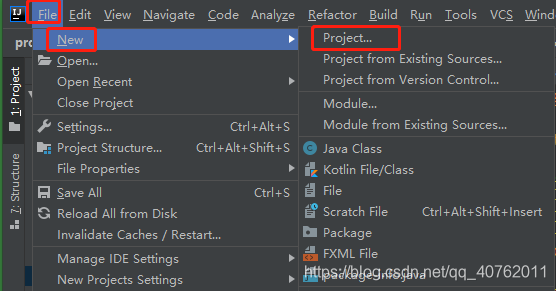
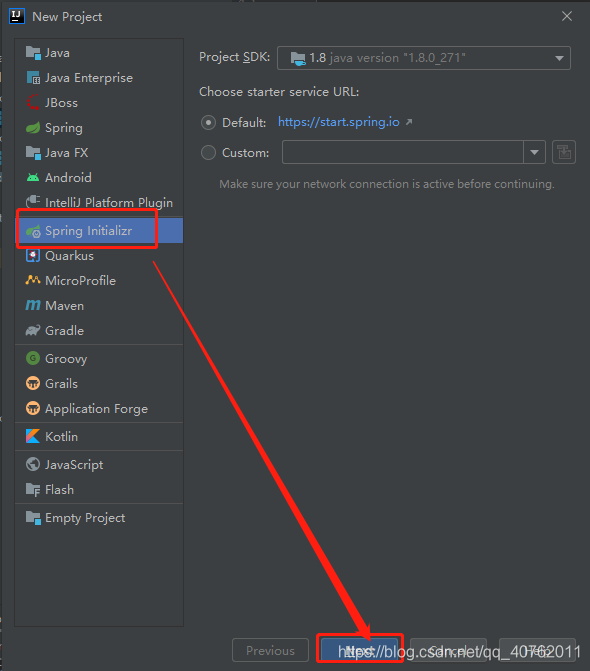


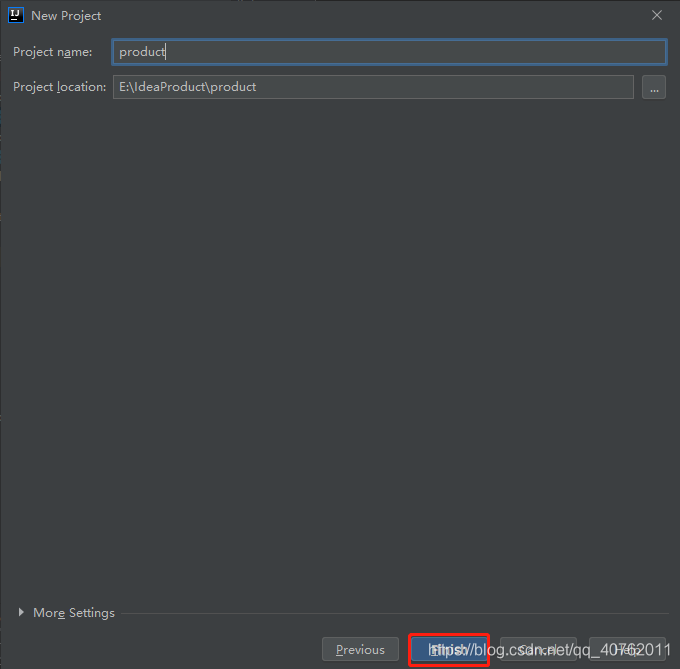
2、配置Swagger
2.1、 pom文件引入
<!--lombok插件-->
<dependency>
<groupId>org.projectlombok</groupId>
<artifactId>lombok</artifactId>
<optional>true</optional>
</dependency>
<dependency>
<groupId>com.github.xiaoymin</groupId>
<artifactId>knife4j-spring-boot-starter</artifactId>
<!--在引用时请在maven中央仓库搜索最新版本号-->
<version>2.0.4</version>
</dependency>
2.2、 SwaggerConfig文件配置信息
此文件所在地方只要在 src 文件夹下即可:

代码:
package com.example.product.modules.config;
import com.github.xiaoymin.knife4j.spring.annotations.EnableKnife4j;
import org.springframework.context.annotation.Bean;
import org.springframework.context.annotation.Configuration;
import springfox.documentation.builders.ApiInfoBuilder;
import springfox.documentation.builders.PathSelectors;
import springfox.documentation.builders.RequestHandlerSelectors;
import springfox.documentation.service.ApiInfo;
import springfox.documentation.spi.DocumentationType;
import springfox.documentation.spring.web.plugins.Docket;
import springfox.documentation.swagger2.annotations.EnableSwagger2;
@Configuration
@EnableSwagger2
@EnableKnife4j
public class SwaggerConfiguration {
@Bean
public Docket createRestApi() {
return new Docket(DocumentationType.SWAGGER_2)
.useDefaultResponseMessages(false)
.apiInfo(apiInfo())
.select()
.apis(RequestHandlerSelectors.basePackage("com.example.product.modules.controller"))
.paths(PathSelectors.any())
.build();
}
private ApiInfo apiInfo() {
return new ApiInfoBuilder()
.title("Swagger接口调试平台")
.description("基于swagger的项目接口调试平台")
.termsOfServiceUrl("http://localhost:8999/")
.version("1.0")
.build();
}
}
上述代码可复制直接使用,其中唯一必须要改的便是 Swagger 需要扫描的 Controller 层的路径;
2.3、controller层
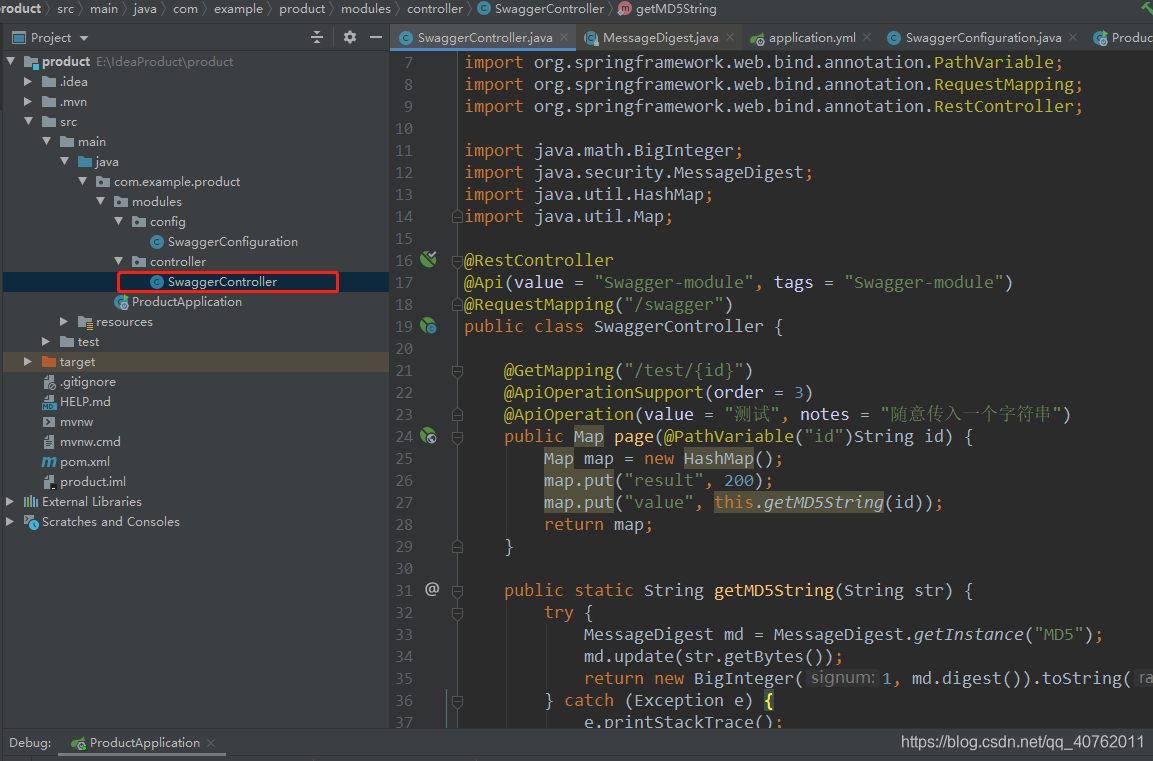
代码:
package com.example.product.modules.controller;
import com.github.xiaoymin.knife4j.annotations.ApiOperationSupport;
import io.swagger.annotations.Api;
import io.swagger.annotations.ApiOperation;
import org.springframework.web.bind.annotation.GetMapping;
import org.springframework.web.bind.annotation.PathVariable;
import org.springframework.web.bind.annotation.RequestMapping;
import org.springframework.web.bind.annotation.RestController;
import java.math.BigInteger;
import java.security.MessageDigest;
import java.util.HashMap;
import java.util.Map;
@RestController
@Api(value = "Swagger-module", tags = "Swagger-module")
@RequestMapping("/swagger")
public class SwaggerController {
@GetMapping("/test/{id}")
@ApiOperationSupport(order = 3)
@ApiOperation(value = "测试", notes = "随意传入一个字符串")
public Map page(@PathVariable("id")String id) {
Map map = new HashMap();
map.put("result", 200);
map.put("value", this.getMD5String(id));
return map;
}
public static String getMD5String(String str) {
try {
MessageDigest md = MessageDigest.getInstance("MD5");
md.update(str.getBytes());
return new BigInteger(1, md.digest()).toString(16);
} catch (Exception e) {
e.printStackTrace();
return null;
}
}
}
此代码中只需要了解以下几个点即可:
- @Api(value = “Swagger-module”, tags = “Swagger-module”) :代表的是模块名,在swagger平台中会以作为每个模块的名称
- @ApiOperation(value = “测试”, notes = “随意传入一个字符串”):代表的是模块下的各个接口的名称;
- 另外需要注意的是,一般情况下如果模块下没有接口或者所有接口均没有添加swagger的接口注解,那么在swagger的调试平台中此模块也不会显示;
2.4、application.yml(或者是:application.properties)
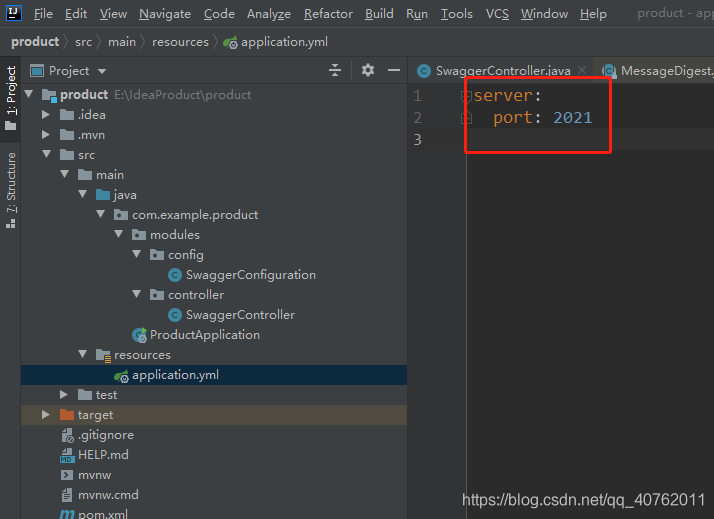
2.5、项目入口文件加注释

2.6、运行项目使用Swagger调试接口
项目正常启动后在浏览器中输入:http://localhost:2021/doc.html#/home (上一步中的服务端口设定是多少,不要忘记把此地址的端口也要保持一致;),回车后会进入如下界面:
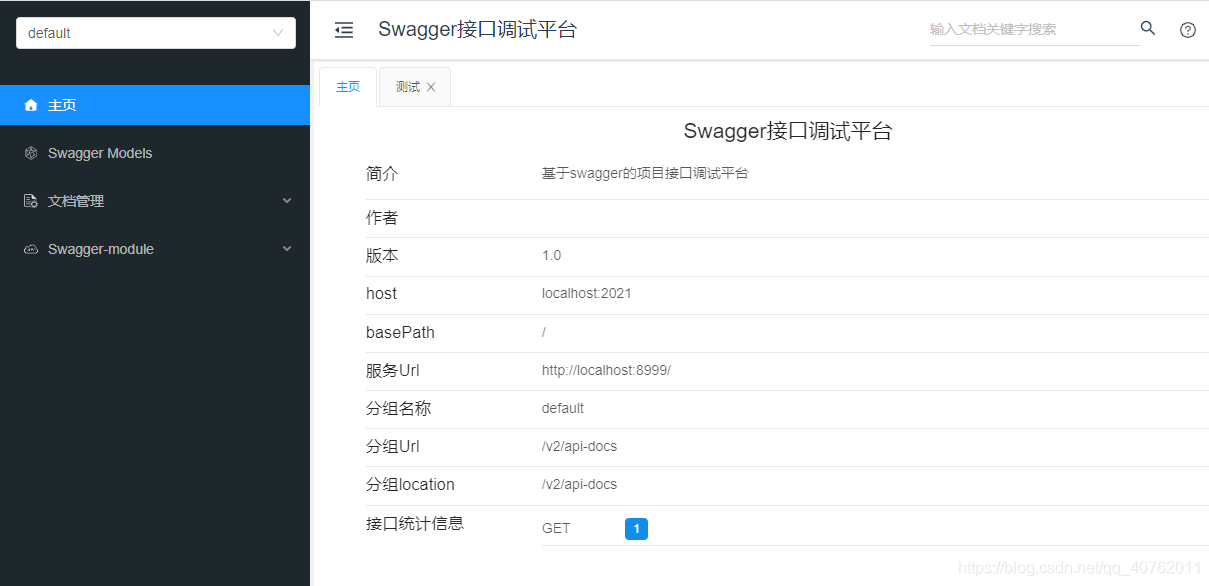
如此情况即算是Swagger已经配置好了,下面调试一下接口试试;
打开自定义的模块名,找到其下的接口,如下所示:
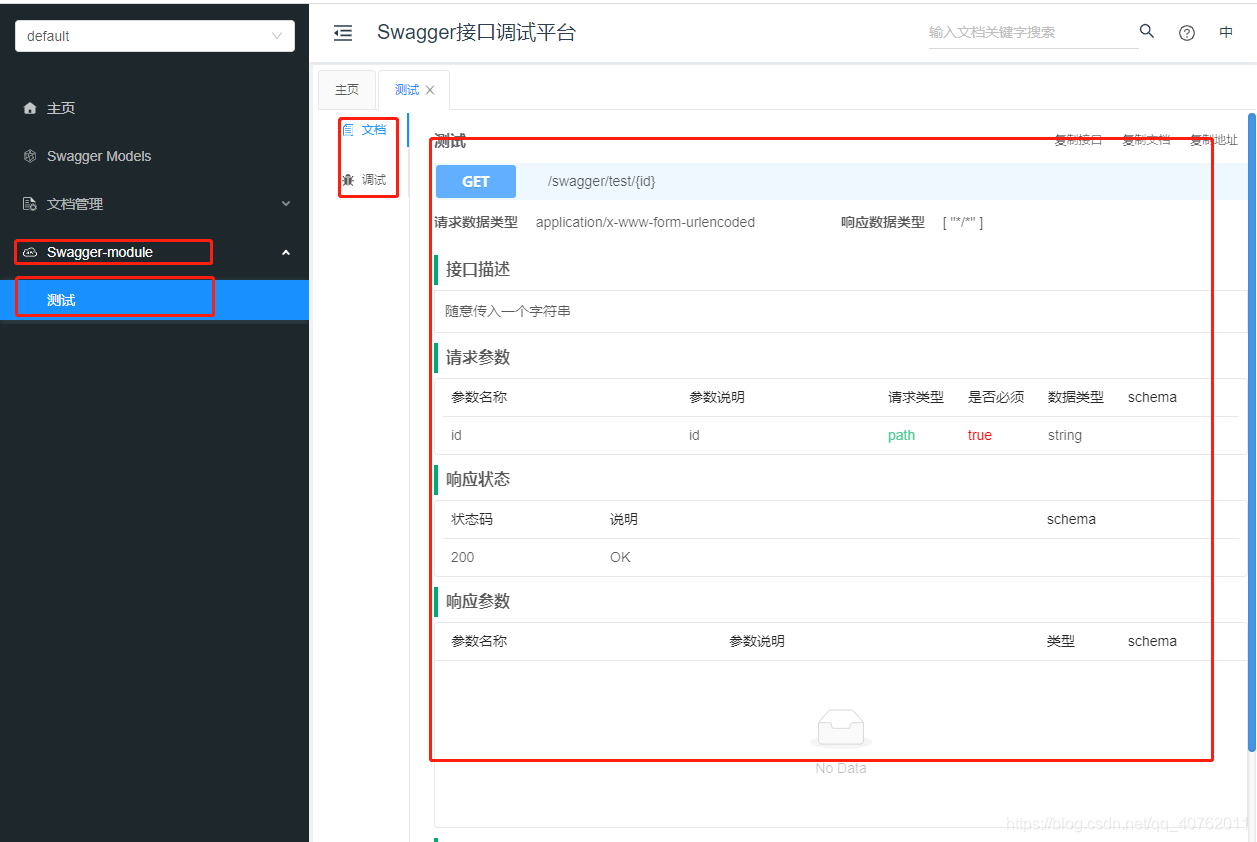
点击 测试 接口中 调试 按钮,并在 id 参数栏中输入任意字符串后点击 发送 会得到如下所示的数据:
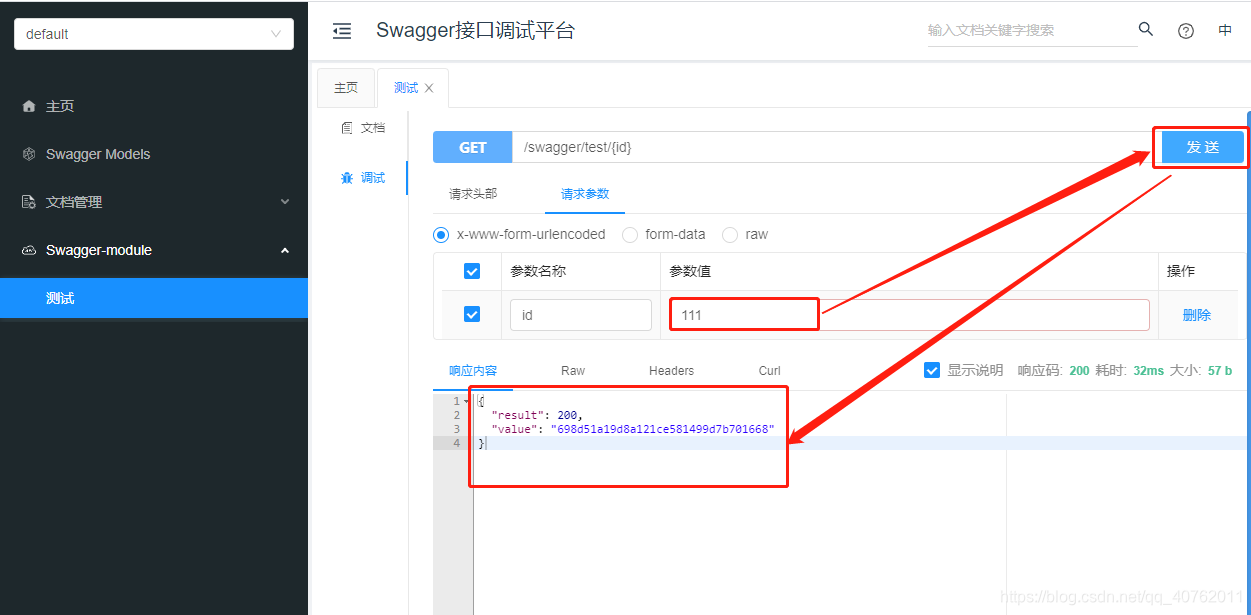
说明接口调用成功并成功返回了传入数据的MD5加密后的数据,因此,调试成功;







 本文详细指导如何在SpringBoot项目中集成Swagger(knife4j),包括pom引入、配置文件设置、Controller接口注解、YAML配置及入口文件标注,最终实现通过Swagger进行接口调试。
本文详细指导如何在SpringBoot项目中集成Swagger(knife4j),包括pom引入、配置文件设置、Controller接口注解、YAML配置及入口文件标注,最终实现通过Swagger进行接口调试。

















 653
653

 被折叠的 条评论
为什么被折叠?
被折叠的 条评论
为什么被折叠?










